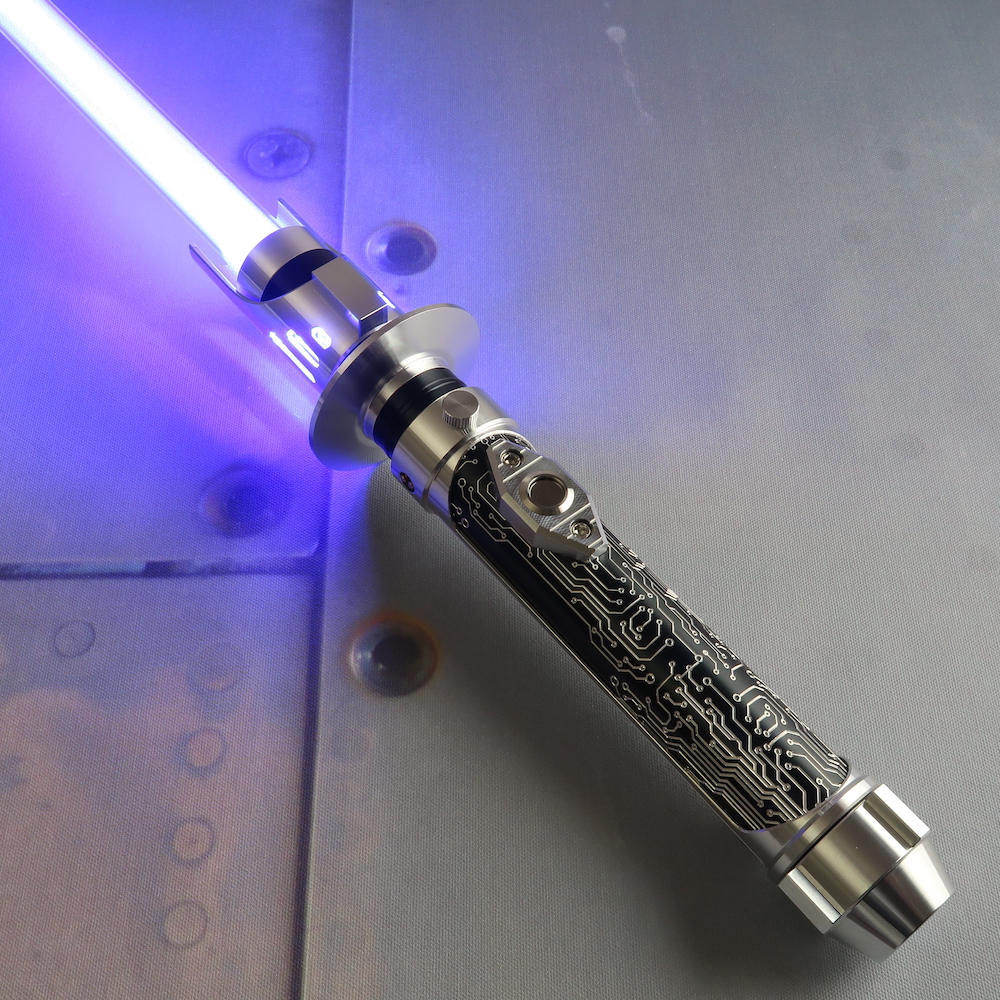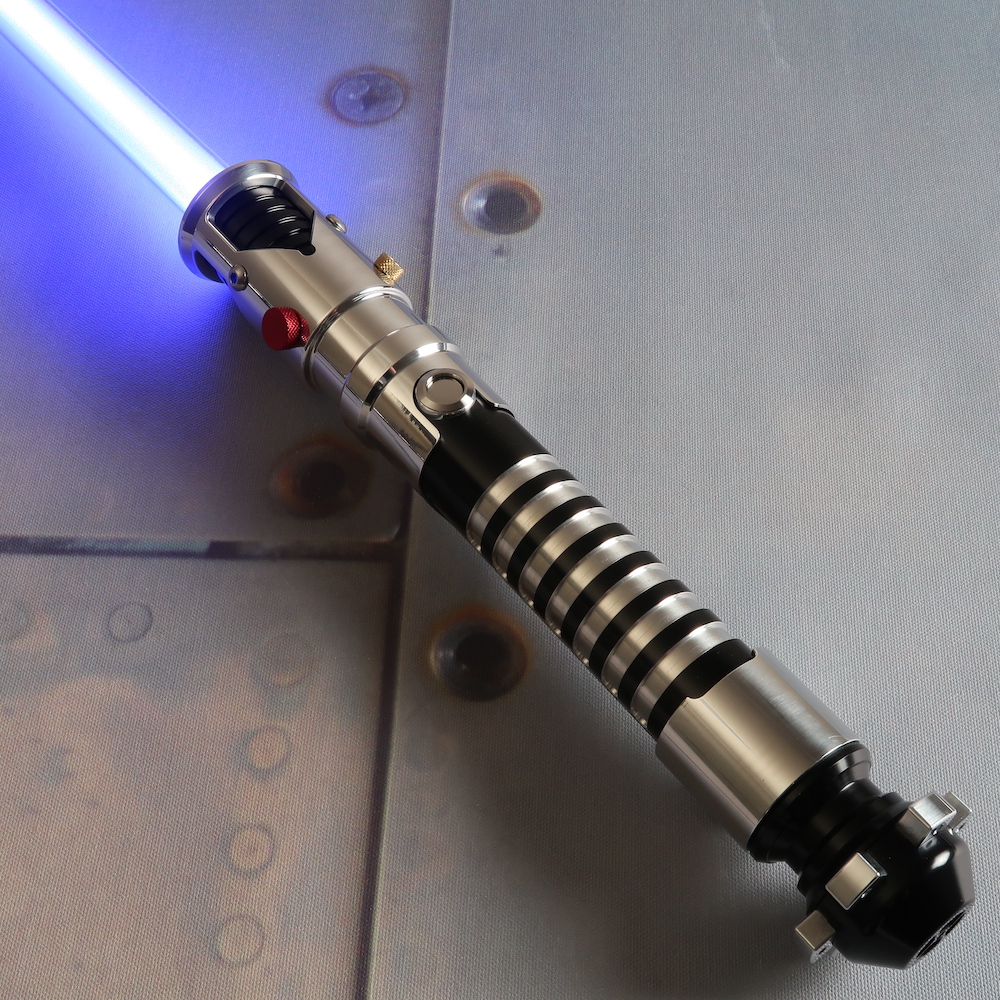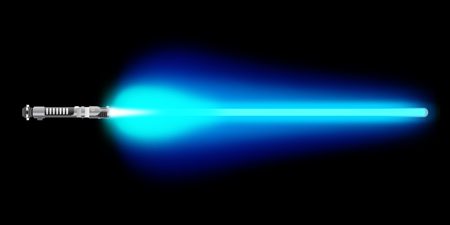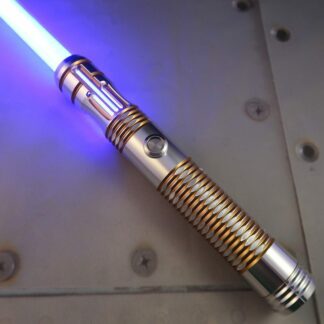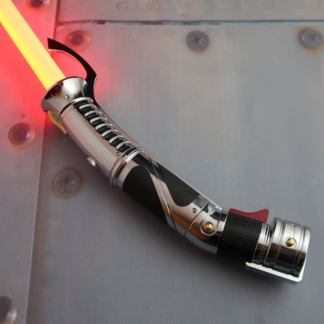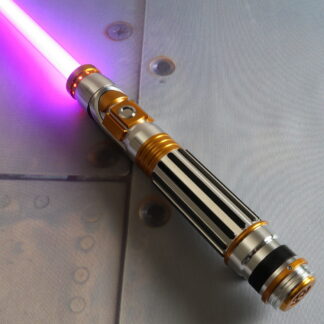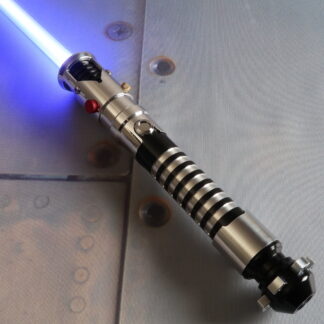Lightsaber Resistant Materials
Lightsabers are among the most powerful weapons in the galaxy, capable of cutting through nearly anything. However, certain lightsaber-resistant materials have been uncovered, proving that even this legendary energy blade has limits. From rare lightsaber-proof metals to genetically engineered defenses, these substances have played a crucial role in battles within a galaxy far, far away. Some can absorb energy, while others disrupt a lightsaber’s blade entirely.
Create Your Own Custom Lightsaber
Can a Lightsaber Cut Through Anything?
Lightsabers are known for their ability to slice through nearly any material, from blast doors to enemy armor. Made from pure plasma, these impressive blades generate extreme heat, allowing them to melt, burn, or sever most substances on contact. However, can a lightsaber cut through anything? Not quite. Some rare materials can resist or even block a lightsaber’s energy. Keep reading to learn more about lightsaber-proof materials.
Amphistaff
Native to the Yuuzhan Vong homeworld, the amphistaff is a genetically engineered serpentine creature bred for combat. These creatures grow in trios from leathery polyps and reach lengths up to 3 meters. Highly intelligent predators, they form an unbreakable bond with the warriors who capture them and serve as living weapons in battle.
Through precise hand motions, a Yuuzhan Vong warrior can command the amphistaff to shift between three distinct forms: a quarterstaff, spear, or whip. It becomes nearly indestructible when hardened, capable of absorbing lightsaber strikes without harm. Its flexibility also allows it to coil around a lightsaber blade unscathed, striking at an opponent with venomous fangs. As one of the rarer weapons in the Star Wars galaxy that is impervious to a lightsaber, the amphistaff is a terrifying tool in the hands of a skilled fighter.
Cortosis Ore
In Star Wars, lightsaber-resistant materials like cortosis ore are rare and highly sought-after. It is known for its unique ability to disable lightsabers on contact. This brittle yet fibrous substance disrupts a lightsaber’s energy field, causing it to short out temporarily. Though repeated strikes can eventually cut through cortosis, its defensive capabilities made it invaluable in anti-lightsaber combat.
Throughout history, cortosis has been used in shadowtrooper armor, C-B3 cortosis battle droids during the Clone Wars, and by the Force-sensitive Jensaarai warriors. However, mining this ore comes with extreme risks—direct skin contact has been known to be lethal. Its dangerous nature and lightsaber invulnerability make cortosis one of the most formidable lightsaber-resistant materials in the galaxy.
Felucian Skullblade
Built from the remains of native creatures on Felucia, the Felucian Skullblade is a rare weapon known for its lightsaber-proof materials. These creatures developed trace amounts of Force-reactive crystals in their bones, making the material durable enough to withstand even the most advanced lightsaber strikes.
Often wielded by Felucian Warriors, a short reptilian species that inhabited Felucia during the Clone Wars, these blades became essential tools in their combat style. With their natural connection to the Force and the resilience of their weapons, Felucian warriors were daunting opponents against both Jedi and Sith.
Mandalorian Iron
Known as beskar, Mandalorian iron is one of the most coveted materials resistant to lightsabers. Found on Mandalore and its moon, Concordia, this rare ore is naturally strong, but its true power is unlocked through the Mandalorian forging process—a ceremonial technique kept secret for generations. Once forged, this impressive alloy becomes virtually indestructible, capable of withstanding lightsaber strikes and heavy blaster fire. The intimidating Mandalorians have long used it to craft weapons, armor, and even starships.
Neuranium
One of the densest metals resistant to lightsabers, Neuranium is a heavy metallic substance known for its immense durability and radiation-shielding properties. This Star Wars lightsaber-resistant material is so dense that gravity-sensitive species have observed it subtly warping space-time when in large quantities.
Neuranium’s unique strength makes it a valuable defensive material, notably used in the walls of Emperor Palpatine’s Surgical Reconstruction Center. It was also used to conceal the Emperor’s lightsaber within the statue of Sistros, ensuring its protection from detection and retrieval.
Orbalisk
Another lightsaber-proof material in the Star Wars galaxy is a creature known as the orbalisk. Native to the planet Dxun, orbalisk are parasitic creatures that thrive on the power of the Dark Side. Living in colonies, they seek out hosts to infest, gradually spreading across their bodies until they are entirely enveloped, often leading to suffocation. When bonded to a host, orbalisk armor becomes nearly impenetrable, with even lightsabers unable to cut through their hardened shells.
Phrik
A rare and highly durable lightsaber-resistant metal, phrik is prized for its lightweight yet nearly indestructible properties. Initially developed by the Arkanians, a near-human species from the frozen world of Arkania, this metallic compound became a crucial element in advanced weaponry and battle armor. Phrik was first utilized in constructing electrostaffs, weapons capable of standing against lightsaber strikes. Recognizing its potential, Emperor Palpatine later incorporated phrik into his dark troopers’ armor to improve their combat resilience.
Songsteel
A rare anti-lightsaber metal, songsteel is known for its extraordinary lightness and luminescent silver sheen. Despite its lightweight nature, it is remarkably strong and capable of deflecting lightsaber strikes. This was demonstrated by Master Darrus Jeht in a practice duel against Jedi Masters Qel-Bertuk and Devan For’deschel. Songsteel’s durability also made it the perfect material for weapons. The fighting staff wielded by the Master in Violet was crafted from a songsteel shard and was used to defend the Five Masters Academy when it came under attack.
Ultrachrome
A highly lightsaber-resistant metal in the Star Wars galaxy, ultrachrome was primarily used as starship armor during the era of the Great Sith War. Its superconductive nature made it exceptionally durable against lightsaber attacks, dispersing the energy evenly across its surface rather than allowing it to concentrate in one area and cut through.
However, while ultrachrome could initially withstand lightsaber strikes, prolonged exposure to extreme heat could cause the entire structure to melt under the immense energy transfer. Despite this limitation, its unique defensive properties made it a valuable material resistant to lightsabers in galactic warfare.
The Future of Lightsaber Resistance
Whether forged into armor, weapons, or starship plating, these rare lightsaber-proof items offer a unique advantage against even the most powerful plasma blades. As the galaxy continues to evolve, so will the search for the ultimate lightsaber-resistant metals and materials.


